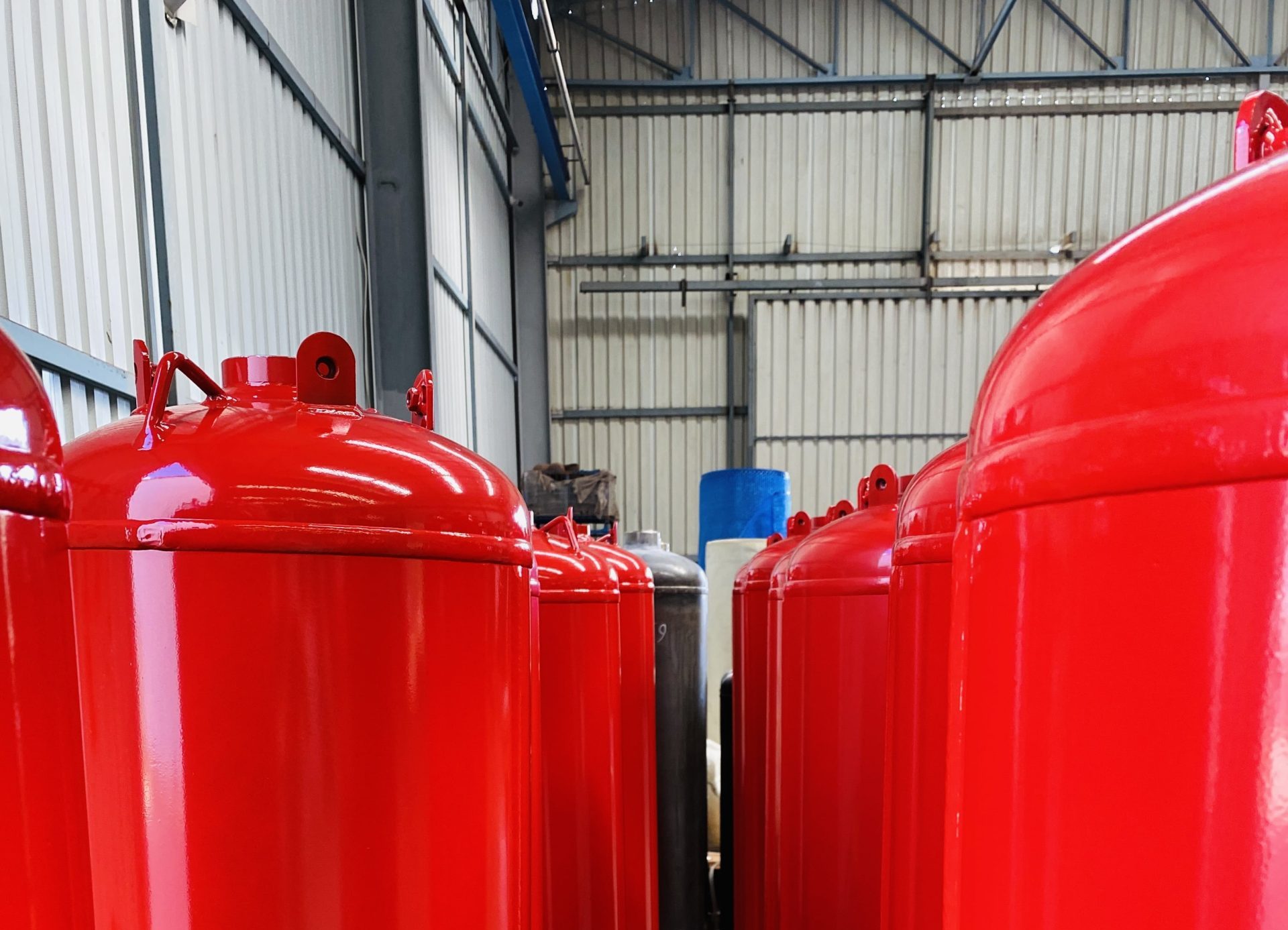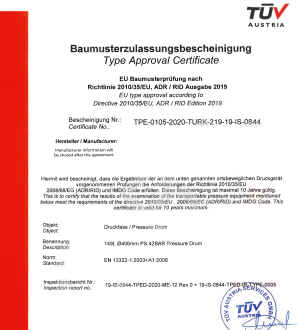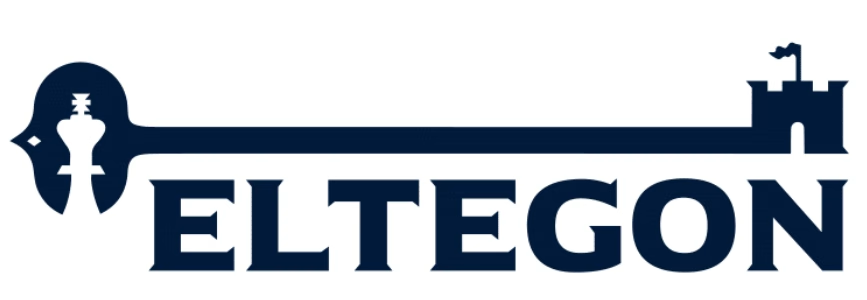
In today’s fast-evolving fire safety industry, clean agent fire suppression systems—like FM-200 (HFC-227ea), FK-5-1-12 (Novec 1230), and HFC-125—play a pivotal role in safeguarding critical environments. However, the real hero often overlooked is the fire suppression cylinder itself. Without a reliable, certified container, even the best clean agent system cannot perform effectively. That’s why TPED certification is a non-negotiable factor when selecting fire cylinders.

What is TPED and Why Does It Matter?
The Transportable Pressure Equipment Directive (TPED 2010/35/EU) ensures that gas containers used in fire suppression systems meet rigorous safety and quality standards. Cylinders without TPED, ADR, or TUV certification lack the official stamp of approval required for legal transport and use within the European Union.
These standards apply to FM-200 cylinders, Novec 1230 cylinders, and other halocarbon gas containers designed to hold pressures like 25 bar, 34.5 bar, and 42 bar (equivalent to 360 psi, 500 psi, and 610 psi).
Key Technical Features of Certified Cylinders
- Working Pressure: Options include 25 bar, 34.5 bar, and 42 bar for agents like HFC-227, FK-5112, and HFC-125.
- Material & Construction: Cylinders are typically made from high-grade P355NH steel and are designed to withstand hydraulic tests up to 63 bar.
- Standards Compliance: Fully compliant with EN13322-1, EN14208, EN-13322, EN-14208, and include certifications from UL, CE, EAC, GOST, PESO, and more.
- Non-Destructive Testing (NDT): Each cylinder undergoes rigorous radiographic (RT), magnetic particle (MT), and ultrasonic (UT) testing to ensure integrity and safety.
Why Fire Suppression System Cylinders Must Be TPED-Certified
-
- Safety First: Cylinders in gaseous fire suppression systems store agents like Heptafluoropropane (FM-200) and Fluoroketone (Novec 1230) under high pressure. TPED ensures they can handle the pressure without risk.
-
- Global Compliance: Certified cylinders are recognized internationally, making them ideal for global fire protection system installations.
-
- Peace of Mind: TPED certification confirms that the cylinder has passed all mechanical, hydraulic, and visual inspections, guaranteeing safe use in your fire protection solutions.
The Hidden Champion of Fire Safety
While the clean agent—whether HFC-227ea, FK-5-1-12, or HFC-125—does the actual fire extinguishing, it’s the cylinder that houses this powerful agent. A single flaw in the container can compromise the entire automatic fire extinguishing system.
That’s why all our fire suppression cylinders are engineered, tested, and certified to meet the strictest international standards. Whether it’s a 42 bar FM-200 cylinder or a 25 bar Novec 1230 container, every product is designed to deliver uncompromised safety.
Let’s protect your critical assets with certified safety—because when fire strikes, there’s no room for compromise.
For more information and inquiries: Contact Here
